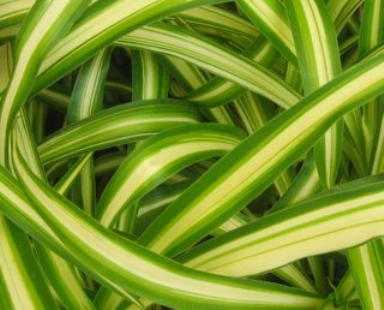Spider Plant
What you need to know about Spider plants
Chlorophytum comosum variegatum
- Whilst Spider plants are common and oft forgotten houseplants a bit of LTC (tender loving care) will produce grand specimens.
- Spiders are voracious eaters and that is also true of Spider Plants so give them plenty of nitrogen based fertiliser.
- Spider plants are also called Chlorophytum comosum variegatum – quite a mouthful or another name is St Bernards Lily. Or you could call it ‘Boris’
- Healthy leaves look good. Keep plants moist for good foliage
- The flowers are small often insignificant white blossom.
- Happy plants produce off-spring in the form of baby plantlets at the end of runners.
- Runners are easy to put in a pot with compost to grow new plants.
- Repot in loam and feed the fleshy root system
Photo from http://click-shubd.blogspot.com/2008/04/spider-plant.html
